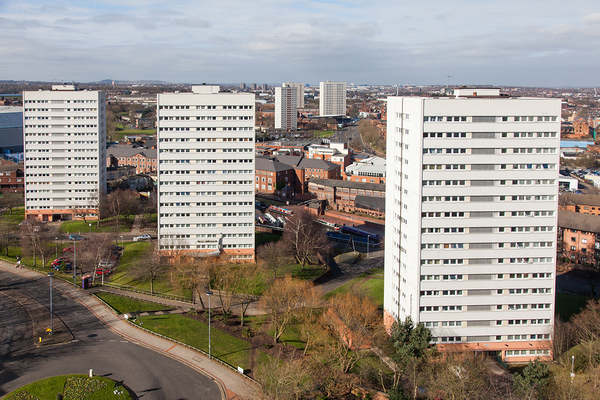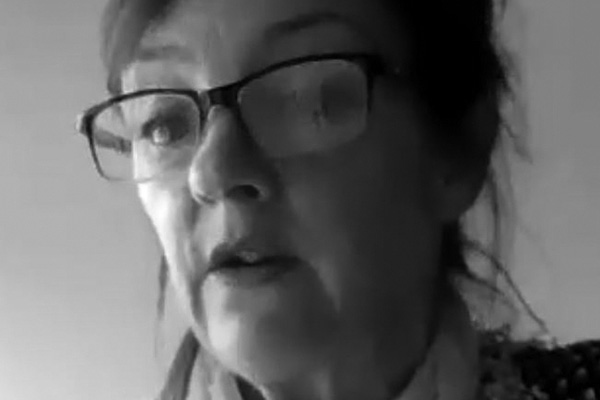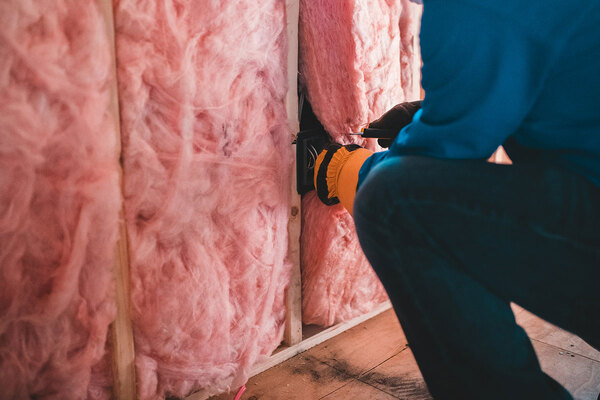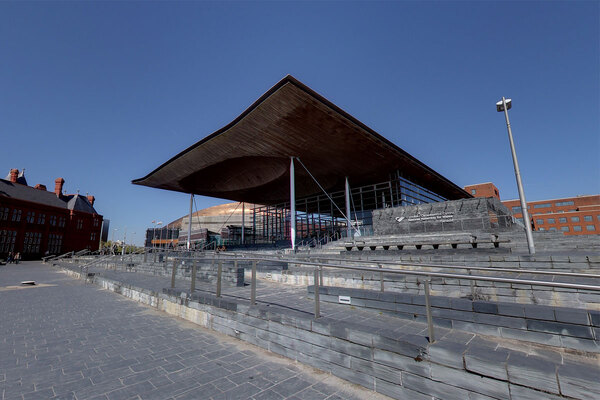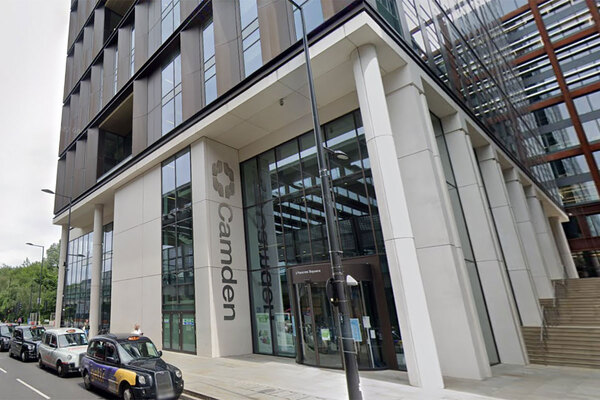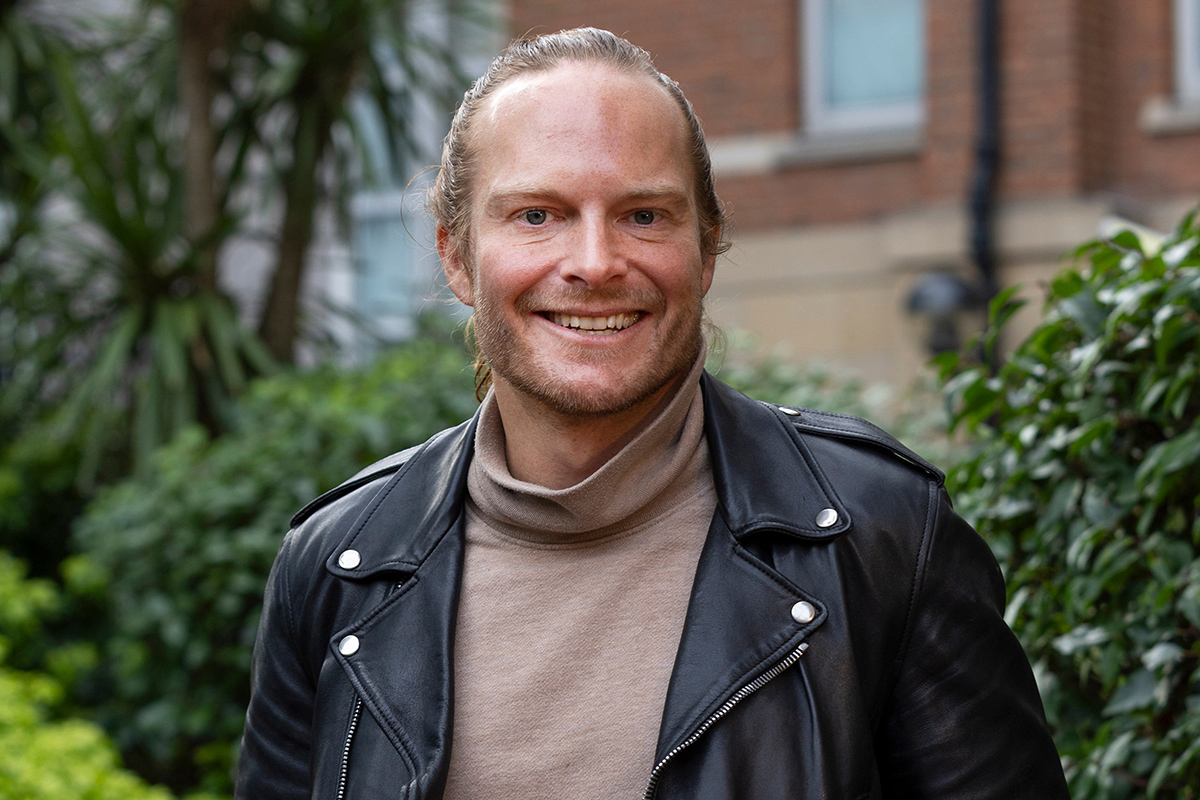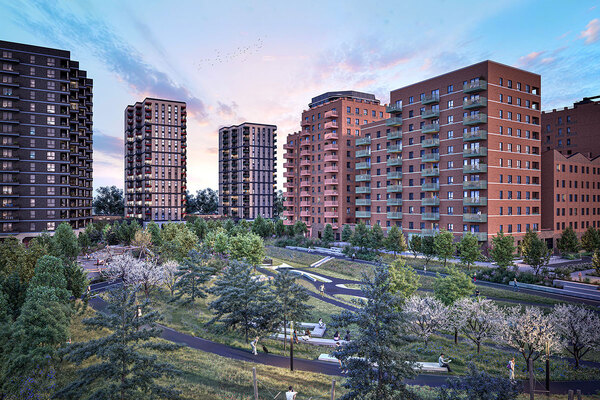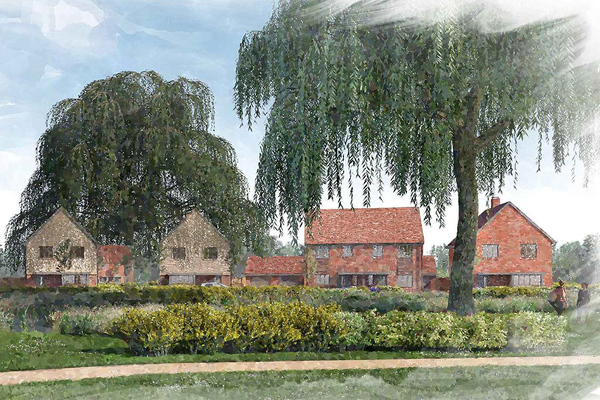The role of the building safety manager: what do landlords need to consider when recruiting?
Landlords managing high rises are required to appoint a building safety manager to ensure compliance with fire safety rules – and communicate this to residents. Inside Housing and fire alarm specialist Aico held a round table discussion to find out the sector’s approach. Illustration by Neil Webb
In association with:

The Building Safety Bill will require all high-rise blocks that are taller than 18m or six storeys to be managed by a building safety manager. This will be a critical new position for the sector once this legislation becomes law. But what sort of person should be recruited to this role? What should their qualifications be? And how will they do their jobs?
To find out more about how social landlords are addressing this issue, Inside Housing hosted a round table, chaired by editor Martin Hilditch, and sponsored by fire alarm specialist Aico.
Balancing the job criteria
The building safety manager’s role will be to support the accountable person – the entity or person with ultimate responsibility for the building under the new legislation – in the day-to-day management of the building to ensure safety standards are adhered to.
The building safety manager will be key in communicating to the landlord’s board any work that has taken place on the building, ensuring the building is meeting the regulator’s requirements, and – just as crucially – communicating with the building’s residents so that they have a complete picture of the safety of where they live.
“This role is broad. Is it possible that the role will be a team rather than a single person?” asks Mr Hilditch.
Paul Dockerill, director of energy and programme manager at WHG, says that the 21,000-home housing association based in the Midlands is budgeting for the role to be made up of two posts, and that it is keen to recruit internally.
“It needs someone who has leadership and passion for the role to build trust with residents. When you look at the role in a simplistic way, there has to be building knowledge, but not necessarily [at a] high level. Great communication is more vital.”
Many around the table felt the challenge was getting the technical requirement of the role balanced with being the main point of contact and communication with residents. “This [requires] a wide range of capability,” observes John Brett, director of resident safety at Camden Council, which manages 210 high rises. “It’s important to get the balance right between giving residents a voice and the corporate requirement.”
Mr Brett has recently joined the board of Building a Safer Future, which was established to reform the building safety system, and he has been part of one of the Ministry of Housing, Communities and Local Government working groups, formed to consider the role of the building safety manager and the competences necessary.
Also part of one of the working groups is Debbie Larner, head of practice at the Chartered Institute of Housing. “For me, the issues are thinking about how competence is assessed, how that’s measured, and the ongoing competence. There’s a challenge around who is responsible. The role could be anything – broad or really narrow,” she says.
Mandeep Bhogil, operations manager at Home Group, one of the UK’s biggest social landlords managing 55,000 properties for 120,000 residents, explains how her team is addressing this by looking at two possibilities: “One option is to have a central team with satellite staff going in to localities. The other is having a building safety manager at each of the tall buildings.
“We’re also really interested in growing our own. The building safety manager role is already there, we just need to decide how it is formed. We already have technically experienced colleagues but we need good communicators to ask residents what’s important to them and what they need from their landlord.”
Ms Bhogil goes on to explain that because Home Group does not have many tall buildings, it is able to make sure the resident engagement at each high rise is tailor-made for the residents in the block.
Tina Mistry, southern specfication manager, Aico
“We can make the role relevant for the build so it’s not tokenistic engagement – it would be collaborative with the resident,” she says.
What progress has been made?
While most social landlords are considering how to best fulfil the role in their organisation, some have already recruited, with a salary of between £50,000 and £70,000, and are now fine-tuning how it works.
Iain Wallace, director of property services at Trafford Housing Trust, says the organisation put a building safety manager in place 15 months ago. “We now have one person who knows all the risks in one building. However we have found that our biggest fire risk is resident behaviour – so we really have to get the resident engagement side of the role right and this will likely be another person, so the role will be fulfilled by two people.”
Scott Edwards has just been appointed by housing association Islington & Shoreditch as its building safety manager. Previously he was a building surveyor for the 2,400-home landlord.
He says: “I’ve been in the role for three months and it’s evolving. The first step has been to look at the building safety of the 11 tall buildings that we manage. The next step is a resident engagement strategy – we’re at the start of that journey.”
He feels one of the advantages of recruiting internally is that he has worked at the association for four years, and therefore he knows the stock.
In order to improve its building knowledge, Hyde has spent the past 18 months working on a safer homes programme, initially focusing on its data and who holds it, what systems are used and ironing out any inconsistencies to ensure “there is now only one source of the truth”, says Liz Oliver, its director of safer homes.
She explains how the association is continuing to upgrade its data to offer an app that residents will be able to use – and will support the building safety manager position.
Rosalind Thorpe, director of education and standards, Chartered Institute of Building
“Our residents will be able to go onto an app to look at information relating to their building – they’ll be able to self-serve and this will take away some of the day-to-day questions we receive,” she says.
Ms Oliver says her concern is that the role is not just technical. “It’s about the softer side of dealing with residents and addressing any fears they have,” she says. She adds that this cannot be covered in a diploma qualification.
So how can competency be measured? “Qualifications are going to be important in this role to cover the knowledge,” says Rosalind Thorpe, director of education and standards at the Chartered Institute of Building. “Many people coming into the role will have a qualification but they will have some skills gaps.”
She explains that in her view, communication skills wouldn’t be part of a qualification. “Behaviours come from your professional membership and it comes from the vigorous code of conduct for that body. Skills come with practice and a period of supervision,” she says.
Richard King is business support manager at the Institute of Fire Safety Managers, and suggests that a similar organisation may need to be established for this new role. “Perhaps membership to an Institute of Building Safety Managers would be a good way to make sure people are competent?” he suggests.
Ms Larner agrees that could be an option. “A qualification doesn’t cut it and I don’t think it is the right approach,” she says.
In numbers
210
High rises in Camden, London
50k
Starting salary (in £) for the building safety manager role at organisations that have already recruited
Mr Dockerill adds: “The challenge for me is the educational process we need to go through about the resident engagement strategy. There is no simple solution for resident strategy as the demographic of residents in blocks is diverse, varied and complex – there are communities within communities and every area and block’s inhabitants is multifaceted and different.”
Along with WHG and Home Group, Hyde has yet to recruit for the position and is still defining its criteria to oversee its 96 tall buildings. Ms Oliver explains: “I don’t want to employ 15 to 20 building safety managers when I have great people within the organisation already. I wonder if there’s a way of this role being a hybrid of several roles coming together in a variety of different skill sets and maybe even train up our residents to be part of it?”
Ms Thorpe agrees that the role could be a blend of skills made up by a selection of people who come together.
She says: “This is not about making one person take responsibility. It’s about upskilling people from various fields including construction, facilities management, etc, and even completely different areas that you might not expect, such as communications and HR.”
Scott Edwards, building safety manager, Islington & Shoreditch Housing Association
Ms Thorpe, who is part of two working groups evaluating the technical side of the Building Safety Bill, concludes: “This role is an opportunity to challenge building safety with landlords. It is really exciting and will change our culture.”
Giving residents transparency
“It’s about creating a cultural shift in an organisation to tackle different agendas. To successfully engage the people who live in these buildings, you need to think about age, ethnicity and language,” says Tina Mistry, southern specification manager at fire alarm company Aico.
“Ethnicity, age, language, ability and sometimes mental health and well-being – it’s about breaking that down to understand your residents. Resident engagement should start now and be everything from start and finish. Looking outside the sector for ways to communicate would be interesting.”
Aisling McStravick, director of asset management at Radius, Northern Ireland’s largest housing association, says the landlord has mainly traditional house stock and only six high rises, however it would like the new role to be the norm across all of its properties and use the opportunity to talk to residents in a different way.
“Our challenge is that our residents don’t engage with us on fire safety and technical issues, so at present we’re asking: how would we get them to be interested in this?”
Ms McStravick explains: “We’re using our community investment team’s knowledge. The compliance of the building is only one aspect of safety maintenance.
“A property that is well looked after by residents who love living there and embrace the community with a sense of pride has an impact and we need to maximise this.
“Everything about this role comes back to the person who lives in the home that we provide for them. [The Hackitt report and the introduction of the building safety manager] has brought to us the realisation that we hadn’t given a focus to the people we should have. [The housing sector] is a people-based business after all.”
Participants
Martin Hilditch (chair),
Editor, Inside Housing
Mandeep Bhogil
Operations manager, Homes Group
John Brett
Director of resident safety, London Borough of Camden Council
Paul Dockerill
Director of energy and programme manager, WHG
Scott Edwards
Building safety manager, Islington & Shoreditch Housing Association
Richard King
Business support manager, Institute of Fire Safety Managers
Debbie Larner
Head of practice, Chartered Institute of Housing
Tina Mistry
Southern sales manager, Aico
Aisling McStravick
Director of asset management, Radius Housing Association
Liz Oliver
Director of safer homes, Hyde
Rosalind Thorpe
Director of education and standards, Chartered Institute of Building
Iain Wallace
Director of property services, Trafford Housing Trust

